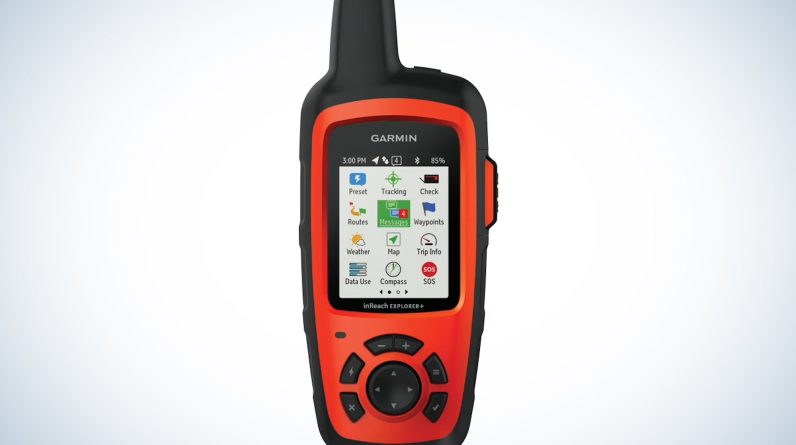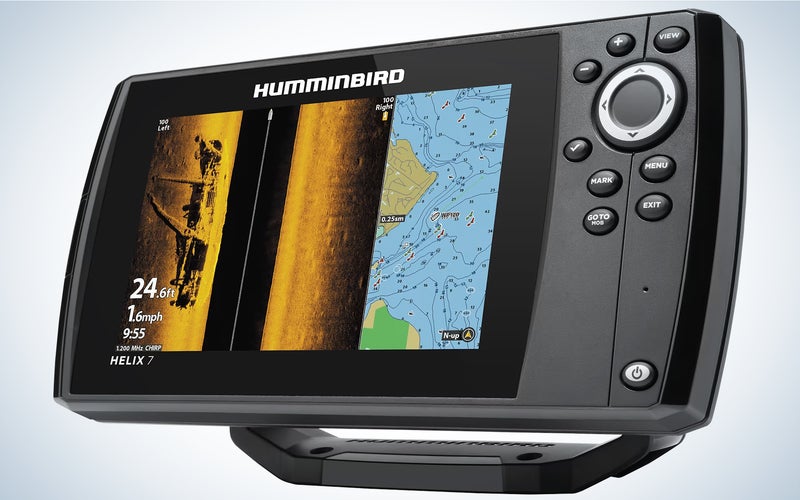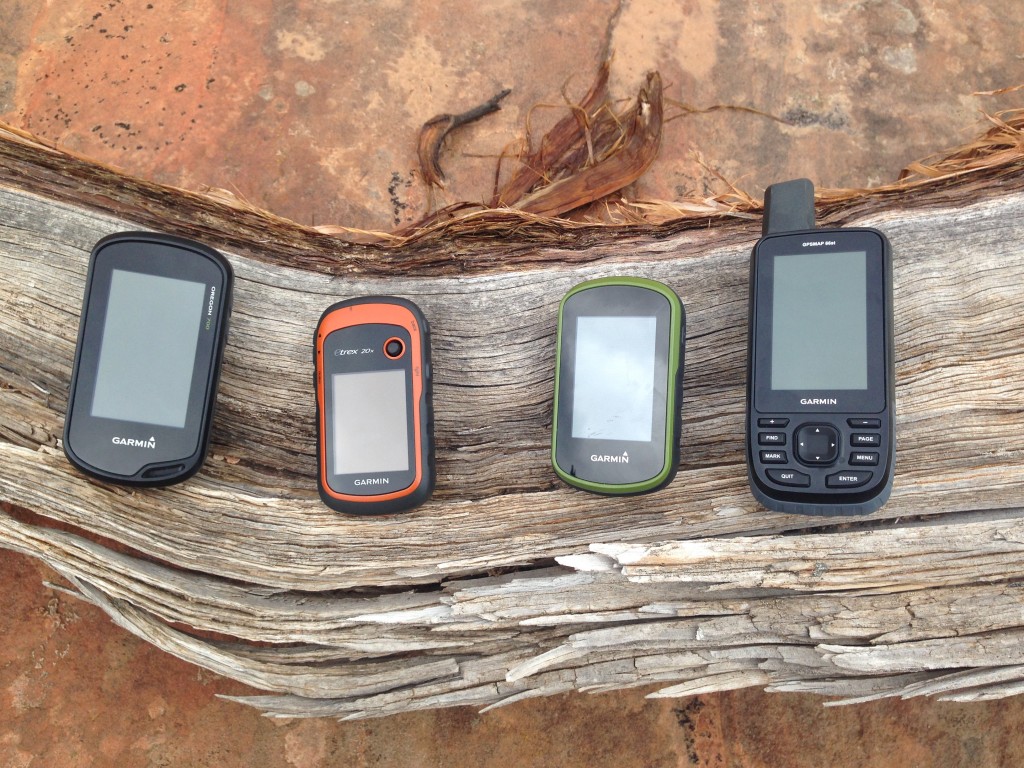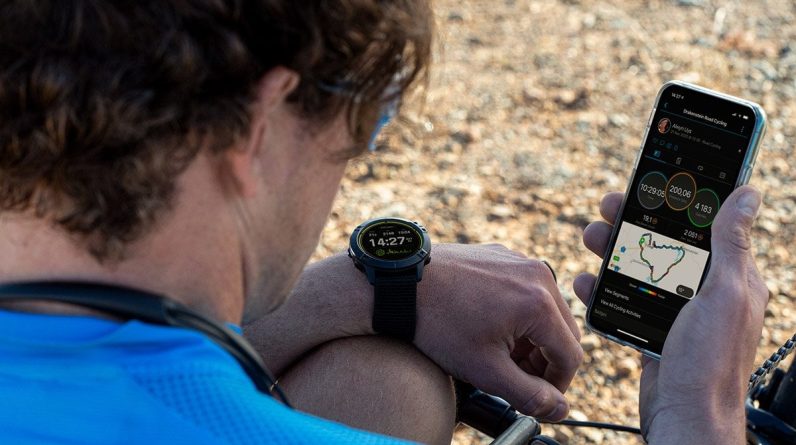
Are you an enthusiastic hunter or angler looking to enhance your outdoor adventures? Look no further! In this article, we will explore the exciting world of using GPS devices for hunting and fishing. With the increasing advancement of technology, GPS devices have become invaluable tools for outdoor enthusiasts. Whether you are tracking game in the wilderness or trying to locate the perfect fishing spot, using a GPS device can greatly improve your chances of success. So, let’s dive into the wonderful world of GPS and discover how it can revolutionize your hunting and fishing experiences.

This image is property of www.outdoorlife.com.
Using GPS Devices for Hunting and Fishing
If you enjoy hunting and fishing, you may have wondered whether you can use GPS devices to enhance your outdoor experiences. The good news is that GPS devices are invaluable tools for hunters and anglers. They can help you navigate unfamiliar territories, mark important waypoints, and ensure your safety in the wilderness. In this comprehensive article, we will explore the different aspects of using GPS devices for hunting and fishing, from understanding what a GPS device is to choosing the right one for your needs, and maximizing its functionalities.
What is a GPS Device?
To understand how GPS devices can assist you in your hunting and fishing trips, it’s essential to know what a GPS device is. GPS stands for Global Positioning System, which is a network of satellites orbiting the Earth. These satellites transmit signals that GPS devices on the ground can receive and use to calculate their exact location. GPS devices are handheld electronic devices equipped with receivers that can communicate with these satellites to pinpoint your coordinates accurately.
Functioning of GPS devices:
GPS devices receive signals from multiple satellites simultaneously. By triangulating these signals, the devices calculate your precise latitude, longitude, and altitude. This information is then displayed on the device’s screen, giving you real-time location data.
Types of GPS Devices Available for Hunting and Fishing:
When it comes to selecting a GPS device for hunting and fishing, you’ll find a wide range of options available. Some GPS devices are specifically designed for outdoor activities, while others are more general-purpose. For hunting and fishing, it is recommended to choose a device specifically tailored to outdoor use. These devices often have robust and durable designs, advanced mapping capabilities, and additional features ideally suited for hunters and anglers.

This image is property of www.outdoorlife.com.
Advantages of Using GPS Devices for Hunting and Fishing
Now that we have a better understanding of what GPS devices are, let’s explore the advantages of using them for hunting and fishing.
Improved Navigation:
One of the significant benefits of using GPS devices for hunting and fishing is improved navigation. These devices provide you with your exact coordinates, which in turn allows you to navigate through unfamiliar terrain with confidence. No longer will you have to rely solely on maps or instinct. GPS devices eliminate the guesswork and ensure you always know where you are and where you need to go.
Enhanced Safety:
Safety should always be a top priority when venturing into the wilderness. GPS devices can significantly enhance your safety while hunting and fishing. In case you find yourself disoriented or lost, you can rely on your GPS device to guide you back to known landmarks or your starting point. Some GPS devices even offer features like emergency SOS buttons, which can be a lifesaver in critical situations.
Efficient and Accurate Tracking:
Tracking your movements and activities can be essential for both hunting and fishing. GPS devices allow you to accurately track and record your routes, providing invaluable data for analyzing your performance and improving your strategies. You can see where you’ve been, how far you’ve traveled, and even review the speed and elevation changes along your journey.
Finding and Marking Prime Hunting and Fishing Spots:
If you’re an avid hunter or angler, you know how crucial it is to find the right spots. GPS devices can help you locate prime hunting and fishing areas with ease. By marking waypoints and landmarks, you can save the locations of successful trips or promising spots for future visits. These marked spots allow you to return to the same locations or share them with fellow hunting or fishing enthusiasts.
Weather Tracking and Alerts:
Weather conditions play a significant role in the success and safety of your outdoor activities. Many GPS devices for hunting and fishing offer weather tracking features that provide real-time information on temperature, humidity, barometric pressure, and even forecasts. With these features, you can stay informed about changing weather patterns and make informed decisions about your hunting and fishing plans.
Choosing the Right GPS Device for Hunting and Fishing
Now that you understand the advantages of using GPS devices for hunting and fishing, it’s important to choose the right one that suits your specific needs. Here are some factors to consider when selecting a GPS device for your outdoor adventures:
Consider the Purpose and Terrain:
Consider the primary purpose of your GPS device. Are you primarily using it for hunting or fishing? Do you need specific features for a particular terrain, such as waterproofing for fishing trips? Understanding your requirements will help you narrow down your options.
Battery Life and Durability:
Battery life is essential for extended trips in the wilderness. Look for GPS devices with long battery lives or the option to use replaceable batteries. Also, consider durability. Your device should be able to withstand rugged outdoor conditions, including drops, water, and dust.
Mapping Capabilities:
Different GPS devices offer varying mapping capabilities. Look for devices that provide detailed maps, including topography, water bodies, and related information specific to hunting and fishing areas. Ensure the device can support additional map downloads or updates if you plan to explore different locations regularly.
Display Size and Resolution:
A clear and readable display is crucial for comfortable viewing, especially in bright sunlight. Consider the size and resolution of the GPS device’s display to ensure it meets your visibility requirements.
Budgetary Considerations:
GPS devices can vary significantly in price. Set a budget and find a device that balances affordability with necessary features. Remember, investing in a high-quality and reliable device is essential for your outdoor adventures.

This image is property of www.outdoorlife.com.
Features to Consider in a GPS Device for Hunting and Fishing
When selecting a GPS device for hunting and fishing, several key features can enhance your overall experience. Consider the following features to make the most out of your device:
Satellite Reception and Accuracy:
GPS devices heavily rely on satellite reception for accurate positioning. Look for devices with strong reception capabilities to ensure accurate and reliable readings, even in challenging environments with dense tree canopies or deep canyons.
Preloaded Maps and Updates:
Choose a GPS device that comes with preloaded maps of hunting and fishing areas or offers easy access to download additional maps. Make sure the device allows for regular map updates, as hunting and fishing locations may change over time.
Altitude and Elevation Details:
For hunting and fishing in mountainous regions or areas with significant changes in elevation, having altitude and elevation data is crucial. Look for GPS devices that provide this information to better understand the terrain you’re navigating.
Wireless Connectivity and Data Sharing:
Some GPS devices offer wireless connectivity, allowing you to share your routes, waypoints, and other data with other devices or online platforms. This feature can be beneficial for sharing your favorite hunting or fishing spots with friends or tracking your performance over time.
Geocaching and Additional Recreational Features:
If you’re interested in geocaching or want some additional recreational features, look for GPS devices that offer these options. Geocaching can be a fun way to enhance your outdoor experience and discover hidden treasures along the way.
Top GPS Devices for Hunting and Fishing
With so many GPS devices available, it can be challenging to choose the right one. Here are some of the top GPS devices specifically designed for hunting and fishing:
Garmin GPSMAP 64sx:
The Garmin GPSMAP 64sx is a popular choice among outdoor enthusiasts. It offers a 2.6-inch color display, long battery life, and preloaded topographic maps. It also features a rugged design that can withstand harsh conditions.
Garmin Oregon 750t:
The Garmin Oregon 750t is another excellent GPS device for hunting and fishing. It boasts a touchscreen display with sunlight-readable qualities, preloaded mapping options, and a built-in camera for capturing memorable moments.
Magellan eXplorist 710:
The Magellan eXplorist 710 is a rugged GPS device suitable for hunting and fishing. It offers a 3-inch touch-sensitive color screen, topographic maps, and a camera for geotagging photos. This device also has an electronic compass and barometric altimeter for accurate readings.
Garmin Montana 610:
The Garmin Montana 610 is a versatile GPS device perfect for hunting and fishing adventures. It features a large 4-inch touchscreen display, preloaded topographic maps, and a high-sensitivity receiver for excellent signal reception.
Lowrance HOOK² 7:
The Lowrance HOOK² 7 is a fishfinder and chartplotter combo that is ideal for avid anglers. It offers a 7-inch display with detailed maps, sonar capabilities, and advanced fish-finding features. This device is specifically designed for fishing enthusiasts.
Humminbird HELIX 5:
The Humminbird HELIX 5 is another top-notch GPS device for anglers. It features a 5-inch color display, advanced sonar technology, and detailed mapping options. It offers precise navigation capabilities and the ability to mark waypoints and hotspots.
Bushnell Phantom:
The Bushnell Phantom is a compact GPS device perfect for golfers and outdoor enthusiasts. While primarily designed for golf, it can also be used for hunting and fishing. It features a simple interface, long battery life, and accurate distance measurements.

This image is property of www.outdoorlife.com.
How to Use a GPS Device for Hunting and Fishing
Once you have chosen the right GPS device for your hunting and fishing expeditions, it’s important to know how to utilize its functionalities effectively. Here are some essential steps to get started:
Initial Setup and Familiarization:
Upon getting your GPS device, thoroughly read the user manual and familiarize yourself with its features and settings. Set up any necessary preferences, such as language, units of measurement, and display brightness.
Acquiring Satellite Signals:
Before using your GPS device, ensure you have a clear line of sight to the sky. The device relies on satellite signals, so being in an open area or near a window can help acquire signals faster. Patience is sometimes required, especially during initial satellite acquisition.
Navigating Menus and Settings:
GPS devices often have menus and settings that allow you to customize your experience. Spend some time exploring these menus, adjusting settings like map orientation, GPS accuracy, or display details to suit your preferences.
Creating and Following a Route:
To create a route, simply mark waypoints along the desired path. These waypoints can be key landmarks, trailheads, or prime hunting or fishing spots. Once the route is created, you can follow it on your GPS device, ensuring you stay on track to reach your destinations.
Plotting Waypoints and Landmarks:
Use your GPS device to mark waypoints and landmarks. This allows you to save the location information of significant spots, such as successful hunting stands or productive fishing holes. You can also add labels and comments to these waypoints for future reference.
Using Tracking and Geofencing Features:
Tracking features are handy for recording your movement throughout the day. This data can be analyzed later to evaluate your hunting or fishing patterns. Geofencing allows you to set boundaries and receive alerts when you exceed them, ensuring you stay within permitted areas.
Navigating with a GPS Device
When you’re out in the field, knowing how to navigate effectively using your GPS device is crucial. Here are some tips for utilizing the navigation features of your device:
Using Coordinates and Waypoints:
Coordinates are a fundamental aspect of GPS navigation. Understand how to enter coordinates into your device and how to navigate to specific waypoints. This skill allows you to reach precise locations or follow predefined routes.
Following Tracks and Trails:
If you come across a track or trail you want to follow, your GPS device can help you navigate along it. Simply load the track into your device and follow the on-screen directions to stay on the designated path.
Utilizing Compass and Map Displays:
Many GPS devices include built-in compasses and map displays that guide your navigation. Familiarize yourself with these features, so you can read and interpret the information displayed accurately.
Understanding Bearing and Direction:
Bearing is the direction from your current position to a specific location. Understanding how to read and interpret bearings will enhance your navigation skills. This knowledge will help you understand the direction you need to travel to reach your desired waypoints or destinations.
Utilizing Turn-by-Turn Navigation:
Some GPS devices offer turn-by-turn navigation capabilities, similar to those found in car GPS systems. These voice-guided instructions can be extremely useful when navigating unfamiliar areas, ensuring you don’t miss any crucial turns or landmarks.

This image is property of u7q2x7c9.stackpathcdn.com.
Marking Waypoints and Trails
Marking waypoints and trails is essential for tracking your hunting or fishing progress and revisiting successful spots. Here are some tips on effectively marking waypoints and trails using your GPS device:
Creating Waypoints for Important Locations:
When you come across a noteworthy location or want to mark a specific area, create a waypoint on your GPS device. Waypoints can be labeled and saved with relevant information for quick reference later.
Recording Tracks While Hunting or Fishing:
Record tracks as you move during your hunting or fishing trips. These tracks can be valuable for analyzing your path, monitoring distances traveled, and even identifying patterns in wildlife movement or fish activity.
Sharing Waypoints and Trails with Others:
If you hunt or fish with friends or as part of a group, sharing waypoints and trails can enhance the overall experience. Some GPS devices allow you to export your recorded tracks or saved waypoints, making it easy to share with others.
Adding Labels and Comments to Waypoints:
To enhance the usefulness of your marked waypoints, add labels or comments to provide context or describe specific details about the location. This information can be invaluable when reviewing your hunting or fishing logs later.
Safety Features of GPS Devices for Hunting and Fishing
In addition to the navigational and tracking features, GPS devices often include safety features that contribute to a safer outdoor experience. Here are some safety features commonly found in GPS devices for hunting and fishing:
Emergency SOS Buttons:
Some GPS devices offer dedicated emergency SOS buttons. In case of an emergency or if you find yourself in a dangerous situation, pressing this button sends out a distress signal, alerting authorities or designated contacts.
Location Sharing:
Many GPS devices allow you to share your current location with others, either in real-time or as part of a periodic check. This feature can be useful when hunting or fishing in remote areas, providing peace of mind to your loved ones who can track your location.
Weather and Storm Alerts:
Weather conditions can quickly change in the great outdoors. Some GPS devices offer weather tracking and storm alert features, allowing you to stay informed about approaching storms or severe weather conditions. With advance knowledge, you can make informed decisions and take necessary precautions to ensure your safety.
Sunrise and Sunset Times:
Hunting and fishing activities are often scheduled around sunrise and sunset. GPS devices can provide accurate sunrise and sunset times based on your location. Knowing these times helps you plan your activities accordingly and avoid any potential hazards related to low light conditions.
Tips for Maximizing the Use of GPS Devices for Hunting and Fishing
To make the most out of your GPS device while hunting and fishing, consider these additional tips:
Keep Spare Batteries and Charging Options:
Carry spare batteries or a portable charger to ensure that your GPS device remains powered throughout your trip. It’s essential to have a reliable power source, especially if you’re in the wilderness for an extended period.
Regularly Update Maps and Software:
Frequently updating your GPS device’s maps and software ensures you have the latest information, including new roads, terrain changes, or hunting and fishing updates. Check for updates before each trip to ensure accurate and up-to-date maps.
Practice Using the Device Before the Trip:
Don’t wait until you’re out in the field to figure out how to use your GPS device. Familiarize yourself with its features and spend some time practicing at home or in a familiar area. This way, you’ll feel more comfortable using it when it matters most.
Use Protective Cases and Waterproofing:
Invest in a protective case for your GPS device to safeguard it from drops, impacts, and elements like water, dust, or dirt. Additionally, look for devices with waterproof or water-resistant properties, especially if you plan to fish or encounter wet environments regularly.
Utilize Online Communities for Tips and Tricks:
Join online forums, social media groups, or communities dedicated to hunting and fishing with GPS devices. These communities share valuable insights, tips, and tricks, helping you to optimize your device’s functionalities and make the most of your outdoor adventures.
In conclusion, GPS devices are invaluable tools for hunters and anglers. They improve navigation, enhance safety, and provide efficient tracking capabilities. By choosing the right GPS device for your needs, considering essential features, and maximizing its functionalities, you can significantly enhance your hunting and fishing experiences. So, grab your GPS device, head outdoors, and enjoy your next adventure with confidence and precision.






